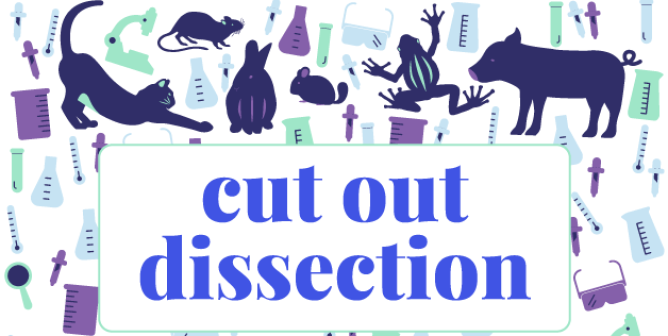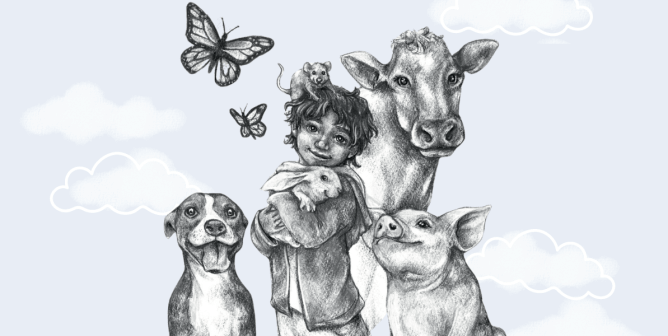7 ‘Naughty’ Classroom Practices
Teachers devote their lives to shaping the minds of future generations and are in a unique position to plant seeds of kindness in their daily classroom interactions. A simple act of compassion can inspire a lifetime of caring for animals.
It can be daunting to keep up with all the animal-related issues that may arise, so TeachKind is here to help. Here’s our list of things that compassionate teachers should avoid—and speak up against if they see at their school.
Cutting Up Dead Animals in Class
Animal dissection is becoming a thing of the past—and for good reason. There’s no excuse to cut apart animals, and studies show that students who use humane alternatives to dissection such as virtual-dissection software learn biology better than students who dissect animals. Use TeachKind’s many free humane resources to work with your science department to replace dissection.

Tormenting Live Animals in Class
Like dissection, experimenting on animals teaches students that animals are nothing more than disposable laboratory tools—a very dangerous lesson. “Pithing” is a cruel torture method wherein live frogs are stabbed in the head with a sharp metal poker, their brains are “scrambled,” and the animals are left defenseless when drugs are applied to their beating hearts and/or electrodes are attached to their leg muscles. TeachKind has received reports of this happening in high schools, and yes, we’re as shocked as you are. Seemingly innocuous bottle biology experiments—in which fish and other animals are stuck in small containers in a misguided attempt to create a self-sustaining ecosystem—often lead to suffering and death for the tiny animals. Please speak up if you hear of these or any animal experiments at your school.
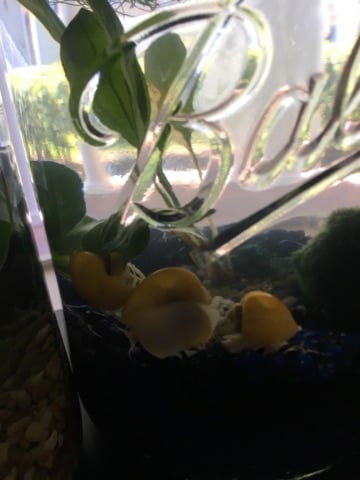
Field Trips to Circuses, Roadside Zoos, SeaWorld, Etc.
Field trips should be fun and educational—which is exactly why trips to roadside zoos, circuses, and other establishments that use animals for entertainment aren’t appropriate for students. Classroom field trips such as mobile dairy programs that cart lactating cows from school to school and sometimes put “fistulated” cows on display are just as cruel. Thankfully, there are plenty of enriching activities that teachers can do with their students in the community that you can share with your faculty and administration.
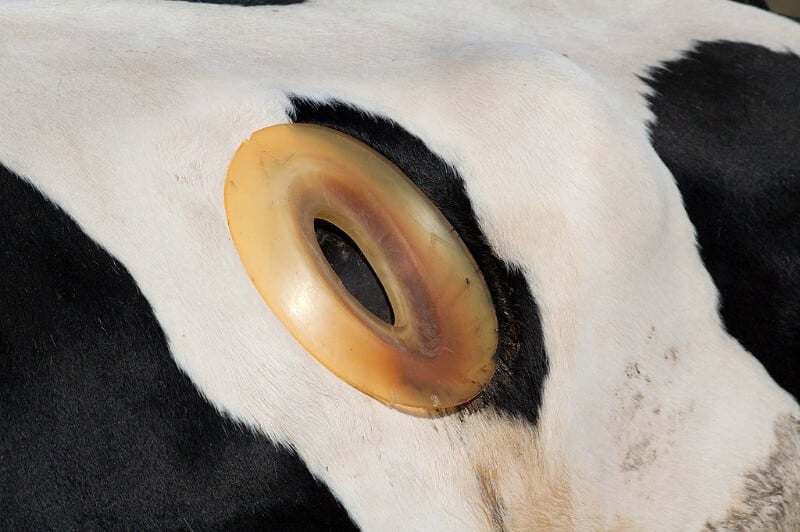
Hatching Chicks for an Experiment
School chick-hatching projects, ostensibly designed to teach students about life cycles, involve placing fertilized chicken eggs in classroom incubators until they hatch. Compassionate students, who undoubtedly become attached to the inquisitive and crafty baby chickens, are horrified to learn that most hatched chicks are killed after the project is completed. Chickens are simply not teaching tools.
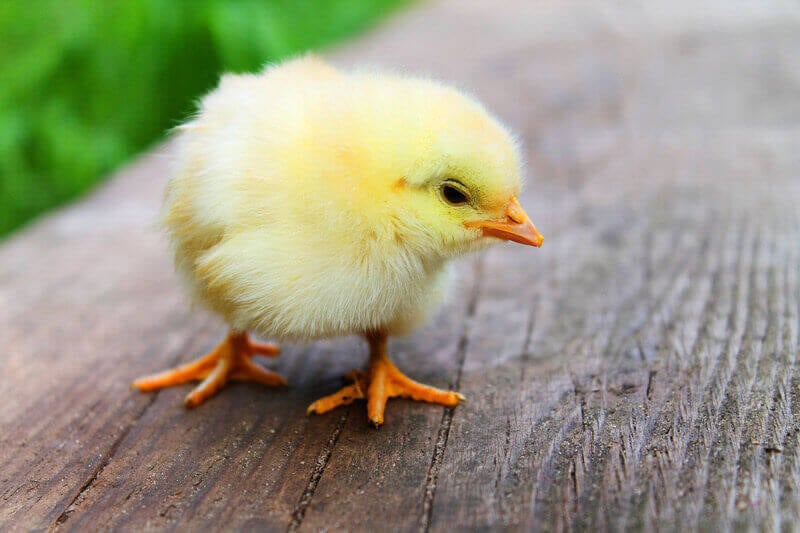
Ridiculously Cruel Donkey Basketball Games
It’s hard to believe that something as absurd as “donkey basketball” still exists in this day and age. Donkeys forced to “play” basketball for fundraising are frequently kicked and screamed at by inexperienced and unruly riders, who are more invested in putting on a show for spectators than in treating these gentle animals with the care that they deserve. There are loads of innovative and humane fundraising opportunities, including dodgeball and rubber-duck derby races. Schools don’t need to resort to cruelty to cash in.

Keeping Classroom “Pets”
Many teachers consider bringing animals into their classrooms as a way to teach students about responsibility, companion animal care, animal science, and more. We know that many teachers who keep classroom “pets” do so with good intentions, but the classroom simply isn’t a suitable home for an animal. Many issues come along with having class “pets,” so we hope you’ll keep the following in mind before choosing to keep an animal in your school. Classroom “pets” are directly linked to the cruel pet trade, in which animals are bred, cruelly confined, and often denied veterinary care. Having animals in the classroom can also be a health hazard to students, and their presence places them at risk for abuse.

Calling Animals “IT”
Teachers know that language matters, and clear communication is an essential part of all disciplines. Referring to an animal as “it” perpetuates the idea that animals are not living, breathing, feeling beings—and are instead inanimate objects. Please use terms such as “he” and “she” whenever possible. You may consider putting an “IT jar” in the faculty lounge to help educate your fellow teachers.

*****
Change starts with you, and animals are counting on us to be responsive and diligent. Now that you’re all caught up on our list of “naughty” practices, please share this page with other educators to spread the word!
Become a TeachKind teacher and sign up for tips and more on humane education!
By submitting this form, you’re acknowledging that you have read and agree to our privacy policy and agree to receive e-mails from us.

